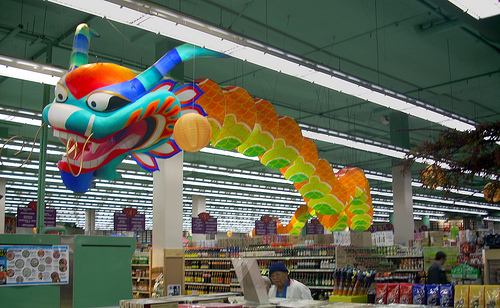Strategies for shopping at international grocery stores

Last weekend I found myself talking to someone about shopping at Uwajimaya, which is the amazing and outstanding Asian grocery store in Seattle. She confessed that she loved the idea of shopping there, but she found the reality to be completely overwhelming. Which is true, but that's part of the appeal. (The parking situation at the south Seattle Uwajimaya is a nightmare, though. No question about it.)
Strategy #1: Research a plan ahead of time
Personally, I am a planner. If I can be clutching a list, then I am in good shape. Before visiting an unfamiliar international grocery store, I will pick a cuisine I want to explore, and look up key ingredients online.
For example, if you want to check out Thai food, you might skim a few recipes to find out what ingredients you will need, that you can't find at your local store - like Thai basil, lemongrass and fish sauce.
Strategy #2: Stick to the snack foods
Snacks are a great cultural leveling force. It's usually pretty easy to identify the snack aisle in any culture. Cookies, candy and salty crunchy snacks are often clumped together. And while you might find some real oddballs (like dried squid or gelatin candy filled with red bean paste), the cost is usually minimal, so you won't feel bad about throwing most of it away.
Strategy #3: Ask other people what they like
Personally if I was going to send someone to an international grocery store I would point them at the Pocky (cookies), kake no tane (salty crunchy spicy crackers), miso soup mix, etc. Crowdsource it!
Combo move: Check the label
This tip is good for whatever strategy you choose. Due to legal requirements for importation into America, all foods must have an ingredients list printed in English. When in doubt, turn the package over and look for the ingredients label. By telling you what's inside, it can help demystify the item you're examining.
Image courtesy Flickr/I-5 Design and Manufacture

0 comments